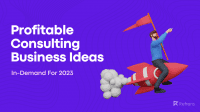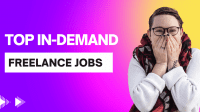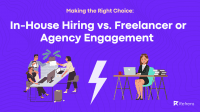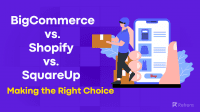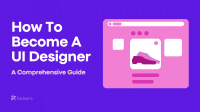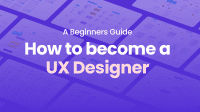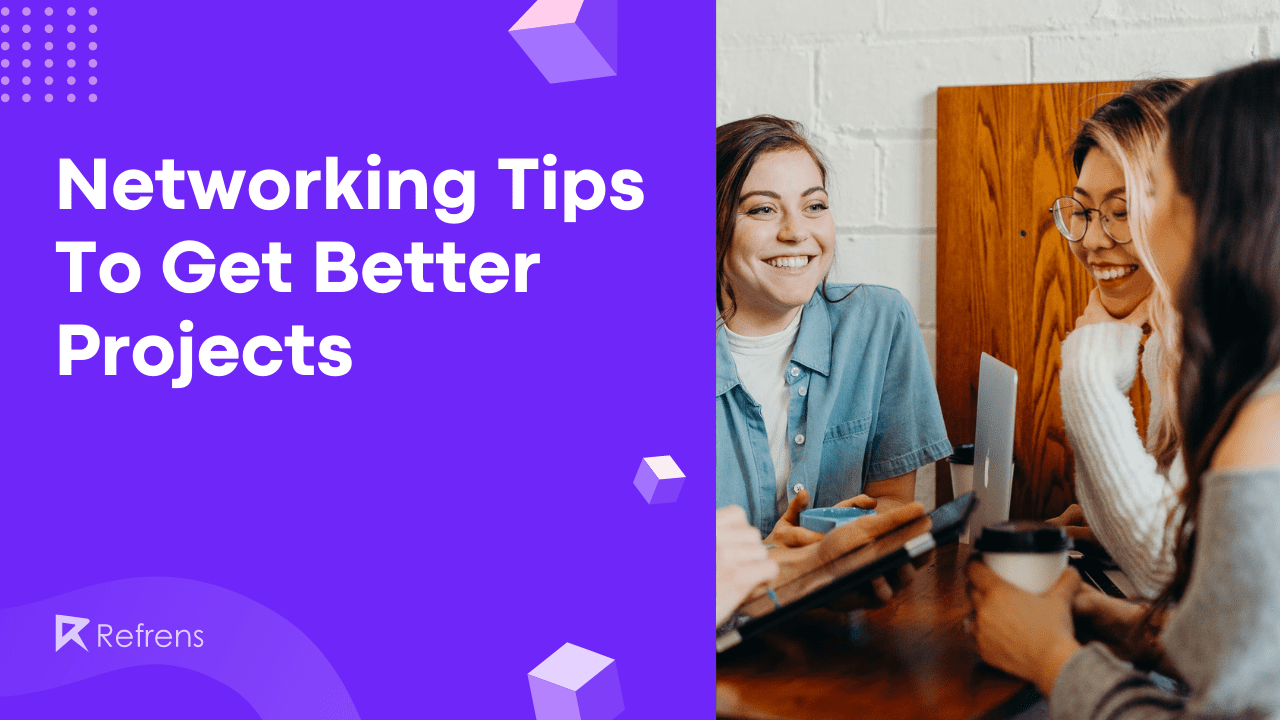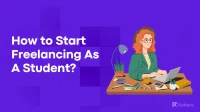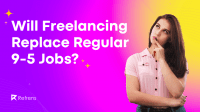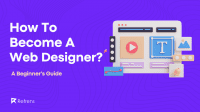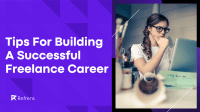With over a decade of product design experience and some of the world’s top tech companies in his portfolio, Arun is a user experience consultant who is passionate about art & aesthetics. For him, bringing the ideas of clients to life and seeing their eyes lighten light up is the best part of his work. In the search of good quality and world-class ambitious projects, he started his freelancing career over a decade ago. Appreciating the flexibility that freelancing allows, he also acknowledges the work and financial uncertainty especially in the first few years of freelancing career.
Arun lays emphasis on learning new skills and being updated with the latest technology. He considers having referrals over networking to generate more leads. According to him, good work will always be your best salesman. Feeling content by making people’s lives easier through design, he regrets not learning enough skills. We wish him success as he ventures onto embracing new things in life.
Read Arun’s success story here:
Introduce yourself to us? Where are you from? How was your childhood?
I’m a UX consultant currently living in Mumbai. I grew up in a small town and had a pretty average childhood. Like most 90s kids would agree, it was a wonderful time to grow up in. We didn’t have the internet then so most of our time was spent either outdoors with friends or watching TV & spending time with family. Now that I look back, at the risk of sounding too old, both were equally rewarding and we were lucky to have that life.
We know that you studied arts. Why did you choose to do UX designing? Tell us about your interest in digital products? What fascinates the most to you about your career choice?
I’ve never really been interested in formal education, except perhaps until my junior high. Where I grew up, I had very little access to computers and the internet was pretty much non-existent.
While art is something I was very interested in and passionately followed, UX was accidental. Somewhere in between my design career, I was hired by a startup and was introduced to some of the greatest minds in design. I was surprised to know how everything I had been doing so far is just the tip of the iceberg. There is so much to learn and so many incredible problems to solve, which I wouldn’t have realised had I not been exposed to those challenges early in my career.
I’ve done UX for both software products & hardware devices and I think I’ll always pick software design. For hardware products, the iterations take way too long and I’m afraid I lack that kind of patience. While I agree that building physical products feel incredibly satisfying, especially after 3D printing went mainstream, my heart would always be in building intangible, digital products. It’s pretty much a personal preference.
I’m fascinated by how much impact us designers can make in the world if we put our hearts into it instead of cutting corners. Every other day I’m reminded of how good design affects our daily lives. I think the best part of my work is seeing the clients’ eyes light up when they see their raw, unpolished idea coming to life. It feels wonderful to be the person who makes it happen.
Why did you choose to freelance? When did you begin to freelance? Were you planning it, or how did it happen?
Ha! That’s always been an interesting question. I started freelancing partly because of lack of good projects to begin with and partly because of the lack of a good product design mindset in India. Most companies in India, at least until early 2010s, were focused largely on monetisation and growth-hacks, paying very little attention to design and solving problems. To make that worse, once the first version of a product was built, they’d completely stop building it further except for bug fixes. It was a terrible time to be a full time UX designer in India.
I decided to take a break and started taking small UX projects from the US & Europe. Turned out I really enjoyed the fast paced product design culture and have never looked back since then. Eventually I started taking larger, more involved projects which last about a year on average. So to answer the question, no I didn’t really plan to do freelance full time.
As a freelancer, how are your services priced? What are the key strategies for you?
This is a tricky question. I don’t have a definite pricing strategy. I usually take up projects which are ambitious and are capable of making impact at a large scale. That’s something I enjoy working on.
Due to the nature of my work, a typical project goes on for 10-12 months so I usually work on flexible budgets. To add to that, as a consultant I bring in a lot of other freelancers to work on the project so it gets a little more complex to have a preset pricing model.
Tell our readers about ‘How to build and use your network effectively’ as a freelancer?
While networking can get you some work, it can only take you so far. I used to network a lot early in my career and realised, in a hard way, that it’s almost always a distraction unless your career is networking. My work picked up significantly only after I stopped actively networking and started focusing completely on learning new skills and producing good work. Instead of putting yourself out there, you’ll have much better chances of being successful if you put your work out there.
I believe these days freelancers do networking a little too much, a little too often. The best clients are not in your social networks and even if they are, there are high chances they’d hire someone who produces great work instead of one who is great friends with them on Facebook.
I have strong opinions against networking events as well, but they’re just opinions. I neither attend them, nor recommend them. My advice would be to look back, once in a while, and try to calculate the ROI from the network and see how effective it is for your career.
What are the most prominent techniques that you use to market yourself?
Most of my work comes from referrals. I’ve been fortunate to have some clients who happily refer me to their peers and even competitors. I believe if you do good work, buyers will come. Good work will always be your best salesman. Having said that, I do post my work on Dribbble occasionally which I think is one of the best platforms for designers to learn and network with other designers without being distracted.
I spend a lot of time writing case studies and enhancing visual design projects which have already been delivered to make it visually appealing to clients. A good portfolio isn’t always about having amazing clients and projects, it’s about making mediocre projects look awesome on Dribbble.
What is the one major pro and/or con of freelancing, according to you?
The pros are pretty obvious. One gets to choose their working hours, the products to work on, and most importantly the people they want to work with. I’ve worked both in-house and remote as an external consultant and I will always pick freelancing over a full time role.
The con is the constant fear of a rug-pull, at least in the first few years of your freelancing career. Unless you plan recurring, multiple sources of income early on, you’ll always be tossing between flood and famine in terms of work & finances.
Do you have any advice for new designers who want to start freelancing?
In almost every city in the world, you can find anything you are looking for, and things that you aren’t. If you stick to the main streets, ones that are policed, you can have a great time, find what you need or want, and chalk up another experience. If you wander off (which is unavoidable in this context), you can find things you don’t want to find, but you can also find new things, things that you didn’t know about before.
Freelancing is exactly like that. You’ll find all kinds of clients and projects. If you’re lucky, you’ll have more good clients than bad ones. But even with bad clients, you’ll always learn things. For instance, from one of my worst clients, I learned how to permanently move the needle on conversions by working incredibly hard on minute details.
Always remember – you’re young, you’re allowed to make mistakes at times.
What is the one thing about clients that you dislike? What can they do to improve your work life?
I’ve been doing this for over a decade now, and the one reason I turn down clients most often is their incessant need to micromanage the design process. While I respect their enthusiasm to stay involved in the process, it’s easy to get carried away by instincts when it comes to design because unlike programming, it’s easy to form opinions and mistake one’s personal preference as good design practice. Just because your favorite color is blue, a blue website isn’t necessarily the best fit for your product. This also stands for the urge to do quick-fixes, rather than investing time in finding meaningful solutions to UX problems. Together, we can identify why a person falls into a fountain or open man-hole while texting.
Another pet-peeve of mine when I started my career was how the clients treat freelancers as an outsider and expect only deliveries. Fortunately, these days I spend the first weeks making them understand how building a product is a collaborative process. The sharing of ideas doesn’t really happen on day one in a single meeting or phone call but it’s an ongoing process instead. We build the product together.
What’s your best piece of work to date? Why do you think that’s your favourite piece?
BrowserStack & SlideShare are my favourite works so far. It’s primarily because of the kind of people I worked with and the audience I built the product for. In both the projects, I worked with some of the smartest guys I’ve known in my career. It’s always fascinating to build products for users who you can relate to. When the primary user is yourself, the product design challenges are 2x more satisfying to solve. You get to work on your own pet peeves and get paid for it!
The teams were wonderful, the products turned out amazing & my work is getting seen (& hopefully loved!) by millions of users every single day. It’s hard not to love the projects.
What mission and vision do you have? How do you want history to look at you?
This is a big question. When I was younger, I believed in the big picture. Steve jobs was everyone’s hero & I had the typical big, hairy, audacious goal of changing the world some day. But with time I realised we’re already doing it every day, in small yet significant steps. It’s incredibly satisfying to make people’s lives easier through design.
As a designer, you’d want to make the world around you look slightly better than how it was before. 🙂
Do you feel content with yourself as you look back or do you think you have missed something?
I always regret not learning enough. When I say learning, I don’t necessarily mean college but learning new skills. I can’t stress enough how important it is to keep updating your skills. No matter how good you are in your field, the skills are getting stale quickly. There are newer technologies & trends coming every few weeks and even if you’re the best at your work, you’ll need to be ready to embrace the newer things.
The one thing which I learned the hard way, and wish I had learned it sooner is to ignore noise in feedback. About 30% of all the terrible feedback you’ll get in life has absolutely nothing to do with you at all but the person giving it. This not only stands for clients, but also your peers and influencers.
Arun can be reached out on Refrens, Twitter, Facebook and LinkedIn.
If you still find people around you who are skeptical about freelancing, read our article on Misconceptions About Freelancers to debunk the stigmas surrounding it.
